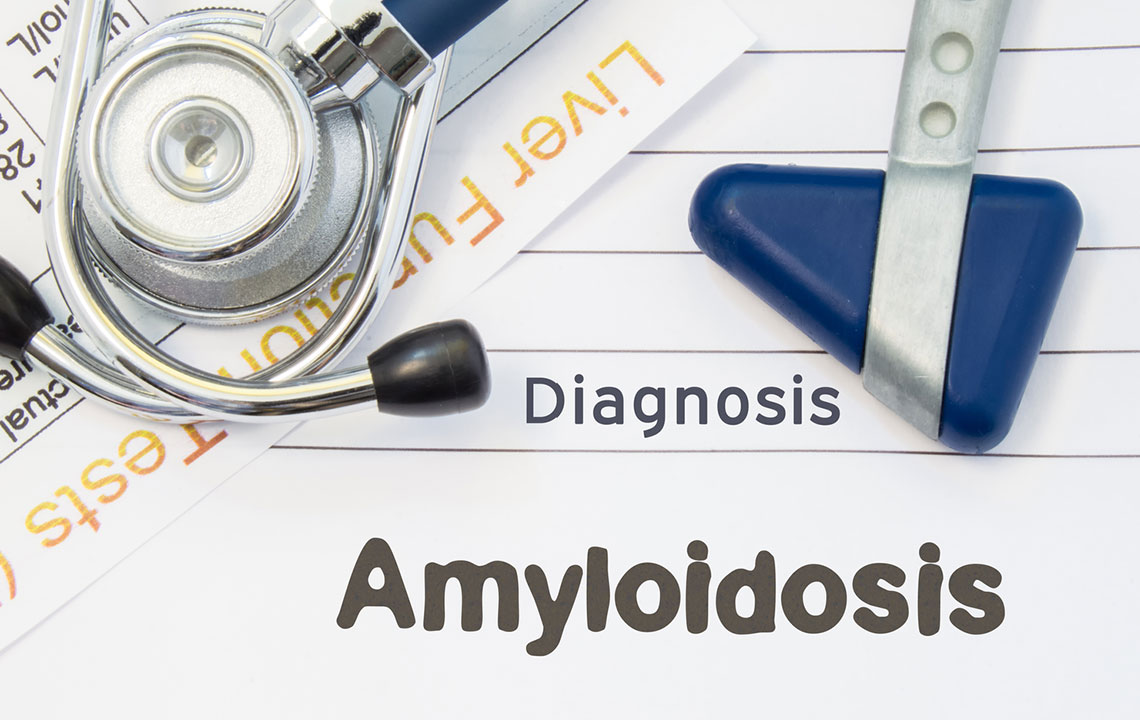Comprehensive Guide to the Different Types of Amyloidosis and Their Impact on Health
Explore the complex world of amyloidosis with detailed insights into its various types, causes, affected organs, symptoms, and current treatment options. This comprehensive guide emphasizes the importance of accurate diagnosis for effective management, highlighting advances in medical research aimed at improving patient outcomes. Whether inherited or acquired, understanding amyloidosis helps clinicians and patients navigate this challenging disease more effectively, increasing the prospects of better quality of life and targeted therapies.

Comprehensive Guide to the Different Types of Amyloidosis and Their Impact on Health
Amyloidosis is a rare, complex group of disorders characterized by the abnormal accumulation of amyloid proteins within various tissues and organs of the body. Despite significant progress in medical sciences, amyloidosis remains a challenging condition to diagnose and treat due to its diverse forms and subtle symptoms. With an estimated 4,000 new cases diagnosed annually worldwide, understanding this disease is crucial for early detection and effective management. This detailed guide explores the different types of amyloidosis, their causes, affected organs, symptoms, diagnostic methods, and current treatment strategies, shedding light on why accurate differentiation is essential for improving patient outcomes.
The complexity and variability of amyloidosis make it a challenging disease to diagnose, as it can mimic other conditions. As such, differentiating among its various forms allows healthcare providers to tailor personalized treatment plans that target specific mechanisms underlying each type, ultimately enhancing quality of life and prognosis.
AL (Primary) Amyloidosis — The Most Common Form
AL amyloidosis, also known as primary or light-chain amyloidosis, is by far the most prevalent form of the disease, accounting for a significant proportion of diagnosed cases. It originates from abnormal plasma cells in the bone marrow that produce monoclonal immunoglobulin light chains. These misfolded proteins, unable to be properly broken down, circulate in the bloodstream and gradually deposit in vital organs such as the heart, kidneys, nerves, gastrointestinal tract, skin, and even the tongue. The infiltration of amyloid material hampers normal organ function, leading to symptoms like heart failure, kidney dysfunction, peripheral neuropathy, and skin changes. Notably, AL amyloidosis is often associated with blood disorders, especially multiple myeloma, which is a type of plasma cell cancer. The disease progression can be rapid if left untreated, emphasizing the importance of early detection and intervention. Diagnosis typically involves tissue biopsies stained with special dyes, blood and urine tests for abnormal proteins, and advanced imaging techniques that detect organ involvement. While there is currently no definitive cure, treatments focus on reducing the production of abnormal light chains, including chemotherapy, immunotherapy, and stem cell transplants.
AA (Secondary) Amyloidosis — Resulting from Chronic Inflammation
Secondary or AA amyloidosis develops primarily due to long-standing inflammatory conditions and persistent infections like tuberculosis, rheumatoid arthritis, and Crohn’s disease. During chronic inflammation, the liver produces an excess of serum amyloid A (SAA) protein, which then deposits in various organs, most commonly affecting the kidneys, liver, and spleen. Symptoms can include swelling, organ enlargement, and impaired organ function such as proteinuria or kidney failure. Rarely, the heart may be affected, leading to restrictive cardiomyopathy in severe cases. Managing AA amyloidosis involves controlling the underlying inflammatory disease with medications like corticosteroids, immunosuppressants, and antibiotics to decrease amyloid precursor production. Early diagnosis benefits from laboratory tests measuring serum amyloid A levels and tissue biopsies. While it is not hereditary, response to disease control measures can slow or halt disease progression, preventing further organ damage.
Familial (ATTR) Amyloidosis — An Inherited Disorder
Familial amyloidosis, also referred to as transthyretin (ATTR) amyloidosis, results from genetic mutations in the transthyretin protein gene. This inherited form is prevalent in specific populations, including certain regions of Portugal, Sweden, and Japan. The mutated transthyretin proteins tend to misfold and form amyloid deposits primarily in the heart and peripheral nerves, causing cardiomyopathy and neuropathy. The most common mutation is V122I, which significantly impacts cardiac tissue. Unlike AL amyloidosis, familial amyloidosis tends to progress more slowly, offering a window for early diagnosis through genetic screening and family history assessments. Symptoms may include heart failure with preserved ejection fraction and sensorimotor neuropathy, impacting daily activities and quality of life. Treatment options are evolving, including liver transplantation and pharmacological agents that stabilize transthyretin, such as tafamidis. Genetic counseling and routine screenings for at-risk family members are vital to managing this inherited disease effectively.
Senile Systemic Amyloidosis — Age-Related Protein Accumulation
Senile systemic amyloidosis (SSA), also known as wild-type ATTR amyloidosis, is predominantly a disease of advanced age, typically affecting individuals over 65 years old. It involves the slow accumulation of normal, non-mutated transthyretin proteins in tissues, especially the heart, leading to restrictive cardiomyopathy. Patients often present with symptoms like shortness of breath, fatigue, and arrhythmias due to stiffened cardiac walls. The prognosis can be relatively better than other forms because of its indolent progression, but its impact on cardiac function can be severe over time. Diagnosis involves advanced cardiac imaging, such as echocardiography and MRI, along with tissue biopsies confirming amyloid deposits. Treatment focuses on managing heart failure symptoms and deploying emerging drugs like transthyretin stabilizers, which can slow amyloid buildup. Ongoing research aims to explore gene-silencing therapies to reduce amyloid production in aging populations.
Dialysis-Related Amyloidosis (DRA) — Consequence of Long-Term Dialysis
Patients on long-term dialysis, especially beyond five years, are susceptible to dialysis-related amyloidosis. This form is caused by the buildup of beta-2 microglobulin, a protein normally cleared by the kidneys. When kidneys fail, this protein accumulates in bones, joints, and tendons, leading to symptoms such as joint pain, carpal tunnel syndrome, and bone cysts. DRA is increasingly recognized as a significant complication in patients undergoing chronic hemodialysis. Management strategies include optimizing dialysis techniques to better remove beta-2 microglobulin, medications to manage symptoms, and, in some cases, kidney transplantation to restore natural filtration processes. Diagnosis typically involves imaging studies demonstrating deposits and biopsies revealing amyloid accumulation. Preventive measures and early detection are essential to minimize permanent musculoskeletal damage and improve life quality in dialysis patients.
Organ-Specific Amyloidosis — Localized Deposits and Rare Cases
While most amyloidosis causes systemic organ involvement, there are instances where amyloid deposits are confined to a single organ, such as the skin (cutaneous amyloidosis), eyes, or urinary bladder. These localized forms tend to have a better prognosis because they do not involve widespread tissue damage. A typical example is epidermal or dermal amyloidosis that mainly causes skin changes like papules or plaques. Another notable condition is Alzheimer’s disease, where amyloid deposits in the brain promote neurodegeneration; however, unlike other amyloidoses, this does not classify as systemic amyloidosis. Diagnosis relies on tissue biopsy from the affected organ, and treatments are often symptomatic or involve localized therapies. Understanding the underlying mechanisms can sometimes offer insights into amyloid formation pathways, which may inform future preventive strategies.
In summary, amyloidosis is a multifaceted disease with numerous forms, each with unique implications for organ health and patient management. Accurate diagnosis of the specific amyloid type is paramount, as it influences treatment options and prognosis. Advances in genetic analysis, imaging techniques, and targeted therapies continue to improve outcomes for patients living with this challenging condition. Staying informed about amyloidosis is essential for healthcare professionals, patients, and caregivers to ensure early detection and optimal care planning.





